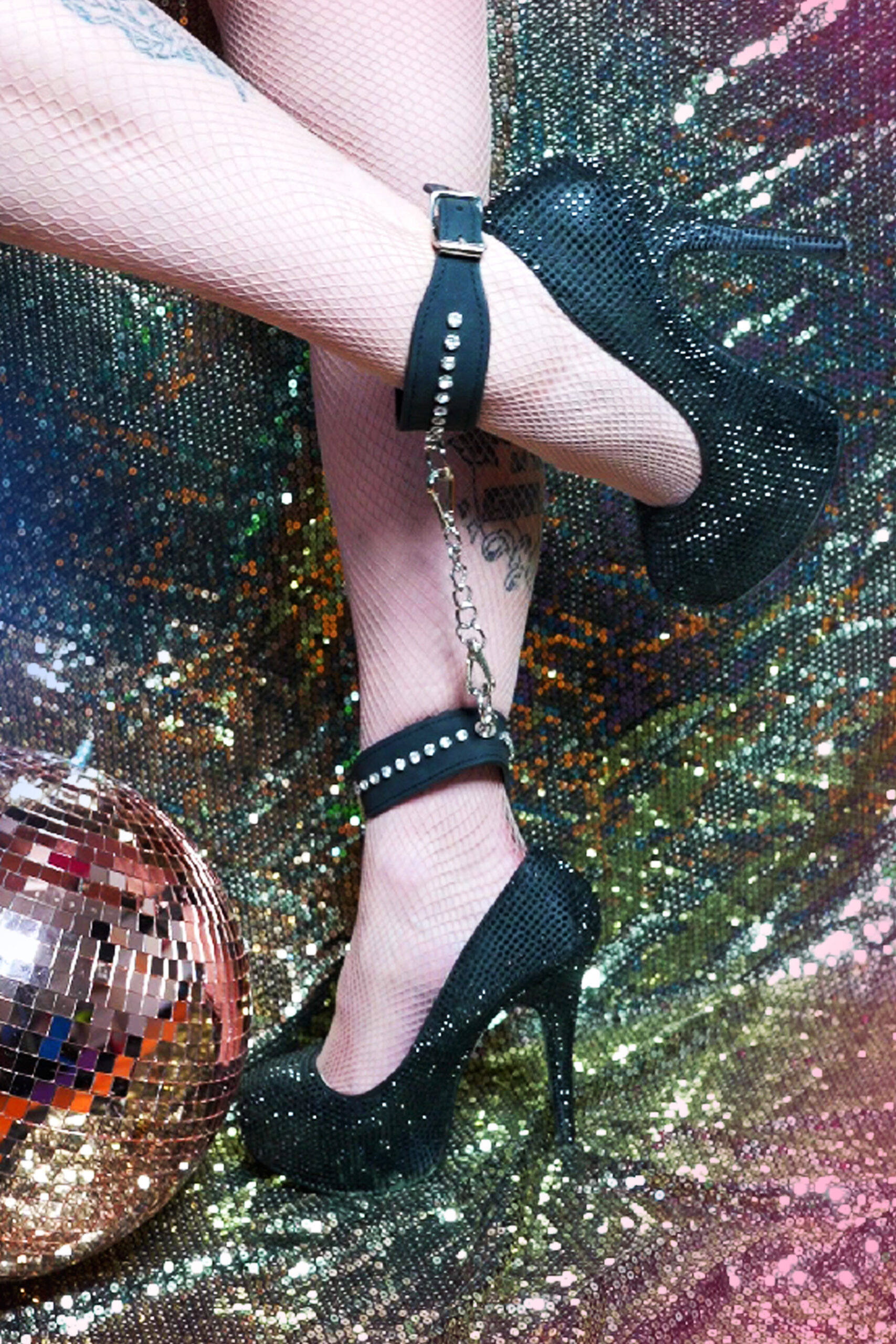What Is Heteroflexibility? Exploring Fluid Sexual Orientations

What is Heteroflexibility?
Heteroflexibility describes a sexual orientation where someone primarily identifies as heterosexual but acknowledges and experiences attraction to people beyond their primary gender preference. It recognizes that sexuality exists on a spectrum and individuals can have fluid or shifting desires throughout their lives.
Defining Heteroflexibility
Heteroflexibility describes a sexual orientation where someone primarily identifies as heterosexual but acknowledges and experiences attraction to people beyond their primary gender preference.
This means they are mainly attracted to one gender, typically men for women identifying as straight and women for men identifying as straight, but also experience attraction to other genders.
It recognizes that sexuality exists on a spectrum and individuals can have fluid or shifting desires throughout their lives.
Distinguishing from Other Sexual Orientations
Heteroflexibility describes a sexual orientation where someone primarily identifies as heterosexual but acknowledges and experiences attraction to people beyond their primary gender preference. This means they are mainly attracted to one gender, typically men for women identifying as straight and women for men identifying as straight, but also experience attraction to other genders.
It’s important to distinguish heteroflexibility from bisexuality. While both involve attraction to more than one gender, bisexual individuals are primarily attracted to two genders (typically male and female), whereas heteroflexible individuals have a primary attraction to one gender with additional attractions to others.
Another distinction is from pansexuality, where individuals are attracted to all genders regardless of their primary preference. Heteroflexibility acknowledges a core heterosexual identity while allowing for fluidity in attraction beyond the primary gender.
Heterosexuality
Heteroflexibility describes a sexual orientation where someone primarily identifies as heterosexual but acknowledges and experiences attraction to people beyond their primary gender preference.
This means they are mainly attracted to one gender, typically men for women identifying as straight and women for men identifying as straight, but also experience attraction to other genders.
- Heteroflexible individuals have a core heterosexual identity, meaning their primary attraction is to one gender.
- They recognize that they can experience attraction to other genders beyond their primary preference.
Bisexuality
Heteroflexibility describes a sexual orientation where someone primarily identifies as heterosexual but acknowledges and experiences attraction to people beyond their primary gender preference. This means they are mainly attracted to one gender, typically men for women identifying as straight and women for men identifying as straight, but also experience attraction to other genders.
It recognizes that sexuality exists on a spectrum and individuals can have fluid or shifting desires throughout their lives.
Heteroflexibility distinguishes itself from bisexuality in that bisexual individuals are primarily attracted to two genders (typically male and female), whereas heteroflexible individuals have a primary attraction to one gender with additional attractions to others.
It also differs from pansexuality, where individuals are attracted to all genders regardless of their primary preference. Heteroflexibility acknowledges a core heterosexual identity while allowing for fluidity in attraction beyond the primary gender.
- Heteroflexible individuals have a core heterosexual identity, meaning their primary attraction is to one gender.
- They recognize that they can experience attraction to other genders beyond their primary preference.
Pansexuality
Heteroflexibility describes a sexual orientation where someone primarily identifies as heterosexual but acknowledges and experiences attraction to people beyond their primary gender preference. This means they are mainly attracted to one gender, typically men for women identifying as straight and women for men identifying as straight, but also experience attraction to other genders.
It recognizes that sexuality exists on a spectrum and individuals can have fluid or shifting desires throughout their lives.

Heteroflexibility distinguishes itself from bisexuality in that bisexual individuals are primarily attracted to two genders (typically male and female), whereas heteroflexible individuals have a primary attraction to one gender with additional attractions to others.
It also differs from pansexuality, where individuals are attracted to all genders regardless of their primary preference. Heteroflexibility acknowledges a core heterosexual identity while allowing for fluidity in attraction beyond the primary gender.
- Heteroflexible individuals have a core heterosexual identity, meaning their primary attraction is to one gender.
- They recognize that they can experience attraction to other genders beyond their primary preference.
Exploring the Spectrum of Attraction
The exploration of human sexuality reveals a vast and diverse spectrum of orientations, challenging rigid definitions and embracing fluidity. One such orientation gaining recognition is heteroflexibility, which describes individuals who primarily identify as heterosexual but also experience attraction to people beyond their core gender preference.
Understanding Fluid Sexuality
Heteroflexibility describes a sexual orientation where someone primarily identifies as heterosexual but acknowledges and experiences attraction to people beyond their primary gender preference. This means they are mainly attracted to one gender, typically men for women identifying as straight and women for men identifying as straight, but also experience attraction to other genders.
It recognizes that sexuality exists on a spectrum and individuals can have fluid or shifting desires throughout their lives.
- Heteroflexible individuals have a core heterosexual identity, meaning their primary attraction is to one gender.
- They recognize that they can experience attraction to other genders beyond their primary preference.
Factors Influencing Sexual Fluidity
Understanding heteroflexibility requires recognizing the fluidity of human sexuality. It describes an individual who primarily identifies as heterosexual but acknowledges and experiences attraction to people beyond their core gender preference. This means they are mainly attracted to one gender, typically men for women identifying as straight and women for men identifying as straight, but also experience attraction to other genders.
A key aspect of heteroflexibility is the recognition that sexuality exists on a spectrum and individuals can have fluid or shifting desires throughout their lives. It’s important to distinguish it from bisexuality, where primary attraction lies in two genders (typically male and female). Heteroflexible individuals have a primary attraction to one gender with additional attractions to others.
Pansexuality also differs from heteroflexibility; pansexual individuals are attracted to all genders regardless of their primary preference. Heteroflexibility acknowledges a core heterosexual identity while allowing for fluidity in attraction beyond the primary gender.
The exploration of human sexuality reveals a vast and diverse spectrum of orientations, challenging rigid definitions and embracing fluidity. Understanding these nuances allows for greater inclusivity and acceptance within the LGBTQ+ community.
Personal Experiences
Heteroflexibility describes a sexual orientation where someone primarily identifies as heterosexual but acknowledges and experiences attraction to people beyond their primary gender preference. This means they are mainly attracted to one gender, typically men for women identifying as straight and women for men identifying as straight, but also experience attraction to other genders.

It recognizes that sexuality exists on a spectrum and individuals can have fluid or shifting desires throughout their lives.
- Heteroflexible individuals have a core heterosexual identity, meaning their primary attraction is to one gender.
- They recognize that they can experience attraction to other genders beyond their primary preference. kinky paddles UK
Understanding heteroflexibility requires recognizing the fluidity of human sexuality. It describes an individual who primarily identifies as heterosexual but acknowledges and experiences attraction to people beyond their core gender preference. This means they are mainly attracted to one gender, typically men for women identifying as straight and women for men identifying as straight, but also experience attraction to other genders.
A key aspect of heteroflexibility is the recognition that sexuality exists on a spectrum and individuals can have fluid or shifting desires throughout their lives. It’s important to distinguish it from bisexuality, where primary attraction lies in two genders (typically male and female). Heteroflexible individuals have a primary attraction to one gender with additional attractions to others. roleplay squirter
Pansexuality also differs from heteroflexibility; pansexual individuals are attracted to all genders regardless of their primary preference. Heteroflexibility acknowledges a core heterosexual identity while allowing for fluidity in attraction beyond the primary gender.
The exploration of human sexuality reveals a vast and diverse spectrum of orientations, challenging rigid definitions and embracing fluidity. Understanding these nuances allows for greater inclusivity and acceptance within the LGBTQ+ community.
Cultural Influences
Heteroflexibility describes a sexual orientation where someone primarily identifies as heterosexual but acknowledges and experiences attraction to people beyond their primary gender preference. This means they are mainly attracted to one gender, typically men for women identifying as straight and women for men identifying as straight, but also experience attraction to other genders.
It recognizes that sexuality exists on a spectrum and individuals can have fluid or shifting desires throughout their lives.
- Heteroflexible individuals have a core heterosexual identity, meaning their primary attraction is to one gender.
- They recognize that they can experience attraction to other genders beyond their primary preference.
Understanding heteroflexibility requires recognizing the fluidity of human sexuality. It describes an individual who primarily identifies as heterosexual but acknowledges and experiences attraction to people beyond their core gender preference. This means they are mainly attracted to one gender, typically men for women identifying as straight and women for men identifying as straight, but also experience attraction to other genders.
A key aspect of heteroflexibility is the recognition that sexuality exists on a spectrum and individuals can have fluid or shifting desires throughout their lives. It’s important to distinguish it from bisexuality, where primary attraction lies in two genders (typically male and female). Heteroflexible individuals have a primary attraction to one gender with additional attractions to others.
Pansexuality also differs from heteroflexibility; pansexual individuals are attracted to all genders regardless of their primary preference. Heteroflexibility acknowledges a core heterosexual identity while allowing for fluidity in attraction beyond the primary gender.
The exploration of human sexuality reveals a vast and diverse spectrum of orientations, challenging rigid definitions and embracing fluidity. Understanding these nuances allows for greater inclusivity and acceptance within the LGBTQ+ community.
Biological Factors
Heteroflexibility is an identity that acknowledges the complexity and fluidity of sexual attraction. While individuals identifying as heteroflexible primarily experience attraction to one gender, they also recognize and accept attractions to other genders outside of their primary preference.
Biological factors contributing to this spectrum of attraction are complex and not fully understood. Research suggests a combination of genetic predispositions, hormonal influences, and environmental factors play a role in shaping an individual’s sexual orientation.
Twin studies, for instance, have indicated a genetic component to sexual orientation, although no specific “gay gene” has been identified. Hormonal variations during fetal development may also influence sexual attraction, as suggested by research exploring the role of prenatal testosterone exposure.

Environmental factors, such as social experiences and cultural influences, can also contribute to the development of sexual orientation.
Living as a Heteroflexible Person
Heteroflexibility is a term that describes individuals who primarily identify as heterosexual but acknowledge experiencing attraction to people beyond their primary gender preference. This means they are mainly attracted to one gender, typically men for women identifying as straight and women for men identifying as straight, but also feel attraction to other genders. Recognizing that sexuality exists on a spectrum and can be fluid throughout a person’s life is key to understanding heteroflexibility.
Challenges and Stigma
Living as a heteroflexible person can present unique challenges and often involves navigating societal stigma surrounding sexuality. Heteronormativity, the societal assumption that everyone is heterosexual, can lead to misunderstandings and prejudice.
Heteroflexible individuals may encounter pressure to conform to rigid binary categories of “straight” or “gay,” leading to feelings of isolation or invalidation. They might face questioning or judgment from family, friends, or society at large about their attractions.
Additionally, heteroflexible people may struggle with internalized homophobia or biphobia if they have been exposed to negative messages about same-sex attraction. This can lead to self-doubt or difficulty accepting their own feelings and identities.
The lack of widespread understanding and acceptance of heteroflexibility can also make it challenging for individuals to find support and connect with others who share similar experiences.
Breaking down these stigmas requires open communication, education, and a willingness to embrace the diversity within the spectrum of human sexuality.
Creating safe spaces where heteroflexible individuals can express themselves authentically is crucial for fostering a more inclusive and accepting society.
Finding Community and Support
Living as a heteroflexible person can present unique challenges and often involves navigating societal stigma surrounding sexuality. Heteronormativity, the societal assumption that everyone is heterosexual, can lead to misunderstandings and prejudice.
Heteroflexible individuals may encounter pressure to conform to rigid binary categories of “straight” or “gay,” leading to feelings of isolation or invalidation. They might face questioning or judgment from family, friends, or society at large about their attractions.
Additionally, heteroflexible people may struggle with internalized homophobia or biphobia if they have been exposed to negative messages about same-sex attraction. This can lead to self-doubt or difficulty accepting their own feelings and identities.
The lack of widespread understanding and acceptance of heteroflexibility can also make it challenging for individuals to find support and connect with others who share similar experiences.
- Seek out online communities and forums dedicated to heteroflexible individuals.
- Attend LGBTQ+ events and organizations that are welcoming to diverse sexual orientations. kinky gags
- Connect with friends and family members who are supportive and understanding.
- Consider therapy or counseling with a therapist experienced in working with LGBTQ+ individuals.
Breaking down these stigmas requires open communication, education, and a willingness to embrace the diversity within the spectrum of human sexuality.
Creating safe spaces where heteroflexible individuals can express themselves authentically is crucial for fostering a more inclusive and accepting society.
double penetration dildo
Pinnacle Wellbeing Media
Boca Flavor
XL bondage gear
- Understanding Ghosting And Its Emotional Impact In Modern Dating - November 14, 2025
- Why Does My Lip Filler Go Away So Fast - November 14, 2025
- What Is The Difference Between Bum Filler Injections And PLLA Fillers? - November 11, 2025
